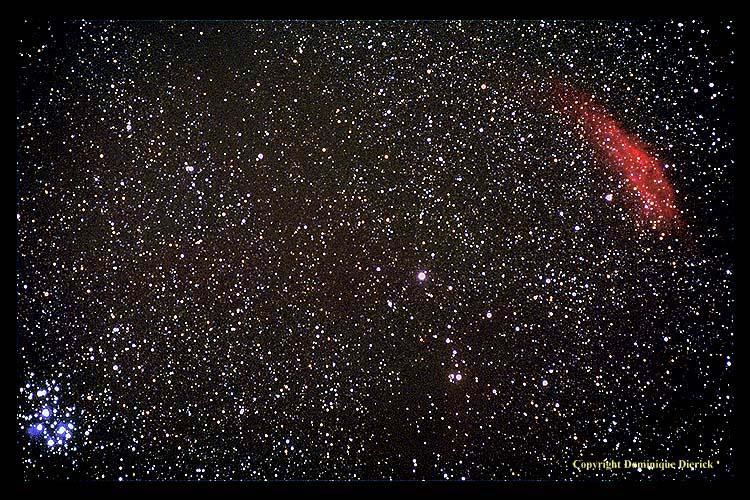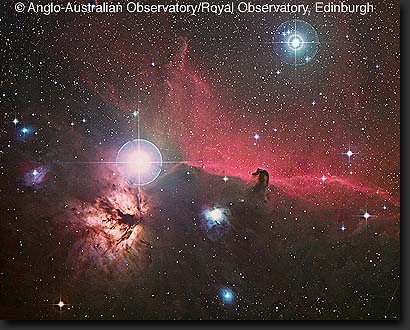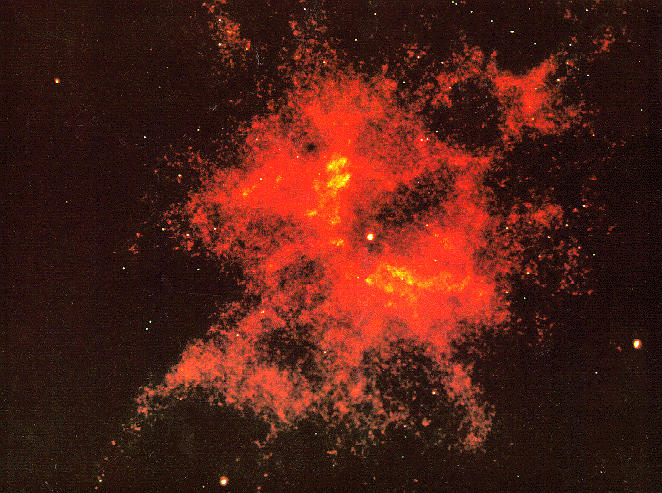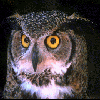The Backyard Astronomer welcomes you to...
WINTER STARHOP

"I stood upon that silent hill. And stared into the sky until... My eyes were blind with stars! And still, I stared into the sky..."
Are you still hanging around with me?! It's been almost a year now, hasn't it? (And still I find ways to delight, annoy, amaze and intrigue you... ;)
Here now, let me pour you a mug of coffee and give you my warmest coat... and beg you not to leave! This beautiful night sky awaits us! And how I long to take you there...
Aaaah, yes. That's much better! Now, give me your hands.. and together we'll guide to scope off on a CHALLENGE!
So let's head on out to the backyard, shall we?

 | Taurus | So, off we head for Taurus, and that beautiful red "star" of the show, Aldeberan! This is the anchor for our first challenge, the NGC1647. A hop to the northeast of Aldebran brings this uniformly bright, open cluster to the eyepeice. The more aperature you possess, the more the stars reveal themselves! A smaller scope will show a couple of dozen, but there are virtually hundreds of stars here... and lots of great close doubles to add to the view! Now using this as our guide, hop a bit to the northeast to blue/white double, 103 Tauri, then bump to the southwest for the NGC1746. This sweet little cluster has a dense core of about 20 or so stars, but the great part is that there are many more scattered in knots about the clusters core! Still ready to explore with me? Then let's go to the M45 the "Pleiades", and find Merope... because she will be our guide to NGC1435, also know as "Temple's Nebula" or the "Merope Nebula". Dark skies make this target happen! Let's take our time, shall we? And enjoy the cool, blue view! And while you're hanging out this Taurus, be sure to do a practice run on the Hyades! Of course, the M1 is most certainly a challenge object also! (I'm so proud you've found it!) Now, let's travel north... |
 | Auriga | Hey... Auriga! I think we've "Ben Hur" before! (sorry... i just couldn't resist! ;) Now, let's hop aboard the chariot, and off the the races! Starting with bright star Capella, a bump to the southwest will bring us to Almaaz, our focal point for the first hop. Nudge the scope west of here to find the faint open cluster NGC1664. This lovely little chain of gems has one bright star (shine on, you crazy diamond) at the southern end. Now back to our practice targets... The M36 will lead you, with a hop to the west, to NGC1893. 'Tis a faint cluster, to be sure, but the 50 or so stars of this NGC stand out in the surrounding starfield. Now for the M37, and back to the M38. This cluster holds a surprise of its' own! Large aperatures will bring out a tight, faint swirl of stars know as the NGC1907... Superb! Now, let's "do" some nebulae... Locate AE Aurigae, because this star is the illuminating power for the IC405, giving rise to the common name "Flaming Star"! Great, isn't it? OK, then let's slide over toward Perseus a bit, (he won't mind!) and find Epsilon Persei... because all we need to do is hop due south to Minkib, or XI Persi, where we will find the NGC1499, that fantastic "California Nebula"! Yes!! (Is that the Red Hot Chili Peppers I hear in the background? "Dream of Californication....") Carve some more notches on the tripod leg, while I turn the tunes up and pour us some more coffee! We've much more to go... ;) |
 | Orion | Now let's visit with Orion... and this time WE will be the "hunter"! (Because these next few objects are going to be some of the most challenging you've ever encountered...) Starting with with "belt", the western-most star is called Mintaka, a lovely blue/white double. Now hop east to Alnilam... because this sky blue star is encased in the NGC1990! Cool, huh? Now keep your eyes relaxed, because the next will rock your world... Jump now to the third star, Alnitak... Oh yeah.. There it is! The NGC2024, "The Flame Nebula"! Now, edge it (and Alnitak) just out of the field of view to the north. Oh my... The IC434!! This is THE most elusive of targets, and the "Horsehead Nebula" is one for us to brag about! (Give the scope a hug, will ya'? It done good!) Now that we've drooled for awhile, let's make you do the practice, ok? Find the M42, and the Trapezium for me. Ready for some more fun? A large telescope can (and has) split the "Trap" and seen two of the "inner four"! (I looked at the trap, Ray.) Bump up now, and take in the M43. Ready for more? Then nudge the scope ever-so-slightly to the north, and we've found The NGC1973, 1975 and 1977... a triple score! (Yeah, baby!) Now, breath the scope just to the north, and we've captured the NGC1981, a open cluster of around twenty stars. More.. you say? (Oh, I aim to please! Let's go...) Back now to Alnitak, and hop northeast where we find the M78, a small circular nebula, lit by two hot young stars from within. And another bump east finds the NGC2112 (And it is a challenge to pick out this compressed open cluster from the starfield!) Now... Betlegeuse, Betelgeuse, Betelgeuse! Hop southeast from here for the NGC2186, a large, loose open star cluster. Orion is ours... |
 | Monoceros | Keep the scope steady, because we are now on the border of the constellation of Monoceros. Hop to the east to find the yellow, white and blue triple star, Epsilon Monocerotis. Let's use this as the "anchor" point (hey, stop that!) for our next target. Bump to the east will pick up the NGC2237, the "Rosette Nebula"! Encased it the delicate folds of this difficult emission nebula is our next stop, the NGC2244, an open star cluster. One particular star in the cluster gains attention... yellow giant, 12 Monocerotis. (Is it possible that this member is simply between us and the cluster? A question for the scholars...) Next, lead's head north for the NGC2251, a "twisted" little sister if I ever saw one! Ready to rock and roll? Then let's slide a bit... to the northeast, where we pick up the NGC2264, "Christmas Tree" cluster! (I know what I'd like to find under mine... ;) This is home to a faint nebula, and an even tougher target, the "Cone Nebula". (Word of warning... don't waste your time unless you've got the muscle of aperature behind you on this one!) At the top the dark "Cone, sits an intensely bright, blue/white double, S Monocerotis. OK, put on your jumping shoes, because the next hop is a long one... about 16 to 18 degrees south, but now we've found the NGC2309! It's a compact cluster, and sits in an attractive field! Now, one more, OK? Nudge us southeast, and pick up practice target, the M50. Good show! Now let me have the scope a bit, because I've got something to show YOU! I'm heading about a third of the way between the 2264 and the "Rosette" complex... looking... YES! There it is! Come look... this is the Hubble Variable Nebula! And talk about BLUE! In all my travels, I have NEVER seen such outstanding blue color!! There is a central star, (but as a variable, can only be seen occasionally) and this is one of the finest things I've found in recent years! (Now, give the eyepiece back!! ;) |
 | Gemini | Are your ready to double your pleasure, and double your fun? Then go to double star, Castor and see if you can find two stars instead of one! Alright! Now let's take on the "Twins"... The M35 is a practice target, but a challenge lays hidden in the same field of view for larger aperatures... NGC2158! Just a half degree southwest of the major body of the M35, the NGC2158 resembles a faint globular cluster and is a rewarding find! Now, for more target practice... hop back over to Wasat, then to the southeast, where we've already located the NGC2392, "Eskimo Nebula". (Sure! You can look at it for awhile! Just as long as you share... ;) This is our "anchor" for the next challenge object. From there, nudge the scope to the north, just past triple system 63... this puts us on the ecliptic plane. Head east the same distance we traveled from Wasat and viola! We just walked across the NGC2420. This is a faint, open cluster, but readily identifiable because it resides in a relatively "starless" field. Ready for a bit more? The let's return to Wasat, and hop down to Mekbuda, an interesting variable. From here, nudge the scope due east (slowly now... these are faint!) to find the NGC2342,(just a "whisper" of a galaxy!) then due south along a "chain" of bright stars for the slightly brighter NGC2339! How about one more before we go? A hop back to Mekbuda, and sweep to the southwest nets the open cluster, NGC2304 Good job! And here you thought that all there was to look at in Gemini was the M35... ;) |
| Canis Major | So... you feel up to running with the big dogs, eh? (Let's do it!) You do know just how NGC2283 and was found making my "practice" pass toward the M41! So condsider that as one "hop" south of Sirius... Now two "hops" more brings up the beautiful open cluster, M41. Two more south captures the NGC2271, which resembles an elongated, out-of-focus star at the eyepiece!. Then three hops south from this point will find the NGC2280. This nice little spiral galaxy will show some structure with magnification and clear skies! Now, let's hop to the west three times to net galaxy NGC2217. Moderately bright, this one looks a great deal like a planetary nebula... Not bad! (Take a deep breath... Let's cook!) Now, hop north three more times toward Mirzam, to find galaxy NGC2223,easily mistaken for a triple system containing nebulosity. More? (Oh yeah, baby... I'm ready for you!) Now hop twice to the northwest to net galaxy NGC2207, a nice, tiny bi-secting pair that looks like mysterious "eyes" in the dark! Still more? (I'm game...) Two hops north and you will find open clusterNGC2204, a tidy little grouping of stars that contains many doubles! Tired yet? (Oh, my!) Then let's head back to Wezen, and jump one step to the northeast and pick up open cluster NGC2354! (And here you thought this old dog didn't know any new tricks! ;) |
 | Puppis | Ready to go play with the "pup" now? Then let's take a dip toward the border between Canis Major and Puppis, by going southeast toward Aludra... this will be our first "anchor" point. Hop to the north to catch Tau Canis Majoris, and its' surrounding star cluster, the NGC2362. This is a great star cluster, and contains many resolvable stars thanks to averted vision! (Watch it now!) Let's move to the northeast across fine double star n Puppis... from here we want to move east for our "practice" target, the M93. Excellent work! (You are sooo good!) Back to work now, and we will move north, and ever-so-slightly to the west to capture the NGC2440. This sweet, irregularly shaped planetary nebula should be visible even to the smaller scope. It is one of the few planetaries that actually show some coloration, and is tinted a faint blue! Now, continue north for another practice target, the M46. Tired, yet? Will we have had a bit of a long night, haven't we? Come now, just a few more things and I'll let you rest. (Ha!) While we're viewing the M46, let's break out the barlow, because I've something to show you... right there, at the north part! This is NGC2438! Another tiny planetary nebula, and such a pleasure to discover when beautiful skies allow! Let's drop back in magnification now and head west for another "practice" shot at the M47. Got it? Good! Now, keep bumping west until we meet up with the NGC2360, our last target for tonight's run. This open cluster is very beautiful... with it's crystalline structure well met against the backdrop of the night sky. (We've had so much fun playing with this little fellow, and there is so much more to learn about this constellation!) Your turn to drive the scope! |
And how I hate it that our journey across the sky together has ended! (Or has it just begun??)
Won't you come back and walk the night with me once again? The expanse of the universe awaits us... and how I long to have you by my side! Exploring the mystery and the magic of the cosmos...
Together...
"Why follow me to higher ground? Lost, as you think I am... Just tilt your sun toward my domain, and my cup runneth over again..."
